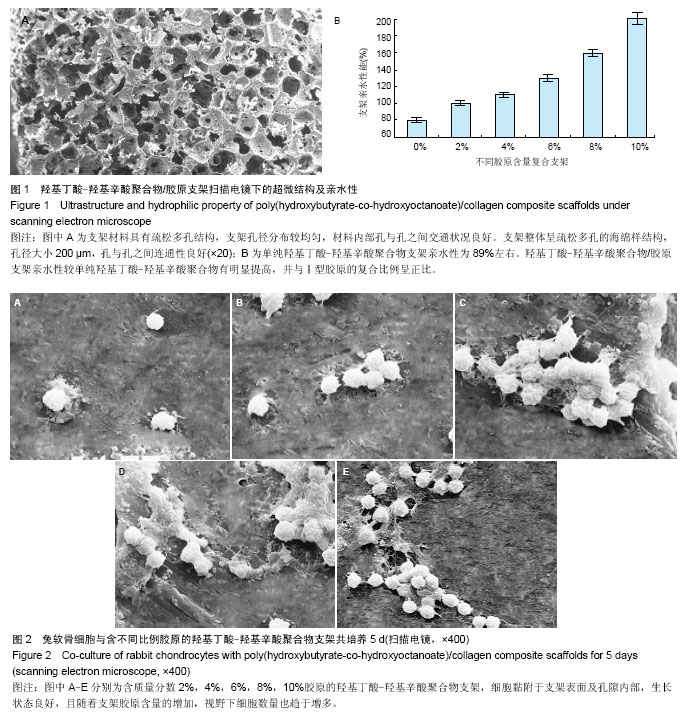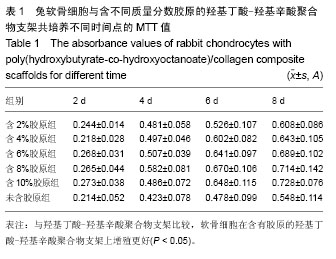中国组织工程研究 ›› 2014, Vol. 18 ›› Issue (12): 1895-1900.doi: 10.3969/j.issn.2095-4344.2014.12.015
• 复合支架材料 composite scaffold materials • 上一篇 下一篇
羟基丁酸-羟基辛酸聚合物/胶原软骨组织工程支架的细胞亲和性
陆 兴1,张永红1,李二峰1,王增荣1,赵良启2
- 1山西医科大学第二医院骨科,山西省太原市 030001
2山西大学生物技术研究所,山西省太原市 030006
Cell affinity of cartilage tissue engineering scaffolds prepared by poly(hydroxybutyrate-co-hydroxyoctanoate)/collagen composite materials
Lu Xing1, Zhang Yong-hong1, Li Er-feng1, Wang Zeng-rong1, Zhao Liang-qi2
- 1Department of Orthopedics, the Second Hospital of Shanxi Medical University, Taiyuan 030001, Shanxi Province, China
2Institute of Biotechnology, Shanxi University, Taiyuan 030006, Shanxi Province, China
摘要:
背景:已有很多实验证明,单独高分子材料或生物性材料制备的组织工程支架无法满足组织工程研究。 目的:评价羟基丁酸-羟基辛酸聚合物/胶原组织工程支架的生物学特性及细胞亲和性。 方法:以羟基丁酸-羟基辛酸聚合物作为主体材料,按质量分数复合不同比例(2%,4%,6%,8%,10%)的胶原,采用溶剂浇铸-颗粒沥滤法制备组织工程支架。通过扫描电镜观察材料内部结构及孔径大小,液体位移法测定材料孔隙率。将羟基丁酸-羟基辛酸聚合物/胶原支架、羟基丁酸-羟基辛酸聚合物支架分别与兔软骨细胞复合培养,MTT法测定细胞的生长曲线,扫描电镜观察细胞在材料上的生长黏附情况。 结果与结论:羟基丁酸-羟基辛酸聚合物/胶原复合软骨组织工程支架孔径大小200 μm左右,孔隙率为(85±2)%,细胞亲水性随加入胶原比例的增加而升高。与羟基丁酸-羟基辛酸聚合物支架比较,不同比例的羟基丁酸-羟基辛酸聚合物/胶原支架可明显促进软骨细胞的黏附、增殖。证实羟基丁酸-羟基辛酸聚合物/胶原复合支架具备更好的细胞亲和性。
中图分类号:


.jpg)